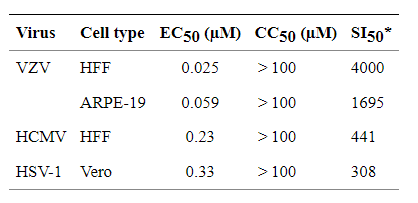A group from Department of Microbiology and Immunology, SUNY Upstate Medical University, Syracuse, NY USA, etc. has reported that H84T BanLec shows broad-spectrum antviral activities against Herpesvirus.
https://www.ncbi.nlm.nih.gov/pmc/articles/PMC8803833/
As antivirals, one emerging strategy is the use of lectins to bind glycoproteins on the viral envelope. Naturally occurring lectins have been explored as broad-spectrum antimicrobials to inhibit viruses, bacteria, and other microbes. One promising lectin, BanLec, was derived from a banana lectin and shows high affinity to mannose N-glycans, and proved an effective strategy to combat HIV. Unfortunately, wild-type BanLec was a T-cell mitogen and activated basophils and mast cells. To address these issues, we developed H84T BanLec, replacing histidine at position 84 with threonine, which markedly reduced mitogenicity while maintaining the antiviral properties of the lectin.
High-mannose N-linked glycans are present on the envelope proteins of many viruses, including human herpesviruses. Human herpesviruses (HHVs) are enveloped DNA viruses that cause a variety of diseases, ranging from cold sores to skin rashes and infectious mononucleosis. HHVs cause lifelong infection, and after the initial infection, remain latent until reactivation. HHVs are prevalent worldwide, with up to 95% of the population infected with multiple types. Three of the most common HHVs are herpes simplex virus 1 (HSV-1), varicella-zoster virus (VZV), and human cytomegalovirus (HCMV).
The mechanism of action for H84T BanLec is virus dependent, and authors have found the following differences.
For VZV, H84T BanLec does not block attachment or entry. Instead, H84T BanLec interferes with post-entry steps in the viral replication process to prevent VZV spread, suggesting that H84T BanLec likely interacts with VZV-infected cells by inhibiting glycoprotein maturation, trafficking, virion assembly, or cell fusion.
For HCMV, H84T BanLec does not interfere with virion synthesis, but that the mechanism of action is through prevention of virus attachment and entry.
For HSV-1, H84T BanLec is also acting post-entry.
 SI (selectivity index) calculated as CC50/EC50
SI (selectivity index) calculated as CC50/EC50
